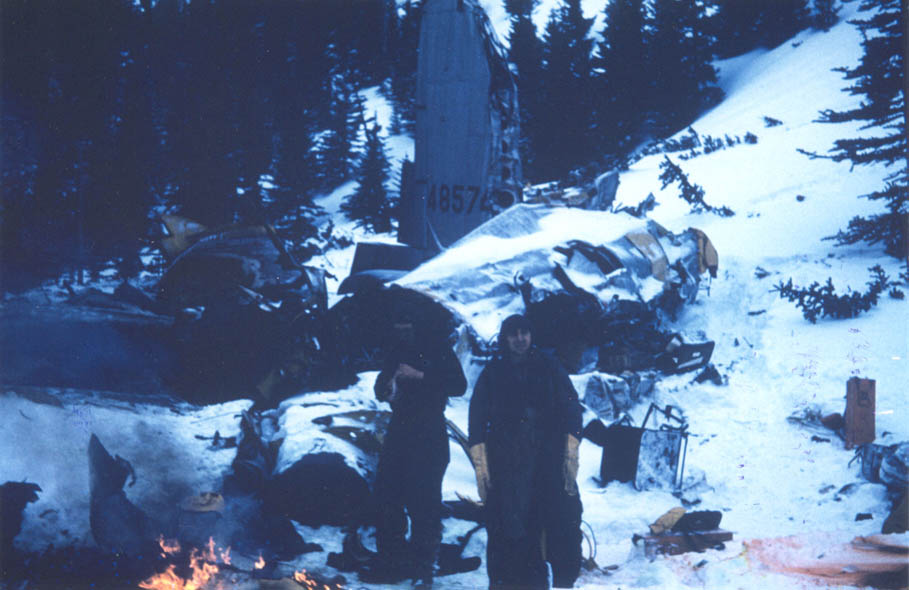
(Accident report information available at the bottom of the page)
AF 44-85746A was an SB-17G, a search-and-rescue variant of the venerable B-17 flying fortress. It was returning from a search mission to locate survivors from a Korean airlift plane that had gone down near Sandspit, B.C. In extreme turbulence and heavy blizzard conditions, the crew experienced sporadic failure of navigation and radio equipment. The plane was tossed up and down 800 feet by the severe winter weather.
Suddenly, the plane's port wing clipped trees near the top of a ridge. The plane was slammed to the ground, ripping out the lower cockpit area and tearing off wing control surfaces. The plane bounced, crashing back to earth on its belly, knocking off engines and stripping away the external life boat slung underneath. The pilot was tossed out a hole in the cockpit and part of the plane slid over top of him, pressing him into the snow. The co-pilot was thrown into the turret compartment and made his way to the bomb bay. The flight engineer had been standing behind the co-pilot and was thrown to the floor of the cockpit and knocked unconscious.
AF '746 then slid like a toboggan down a 2,000 foot steep slope, spewing man and machine in her wake as fire erupted through the cockpit.

Path of plane can be seen in the snow on the right side of this photo, taken the morning after the crash. Photo by Ken Sentner, courtesy Carl Scargall.
The co-pilot rode the plane down the hill, bracing himself on the bomb racks. The flight engineer regained consciousness and escaped out a gaping hole in the fuselage as the plane continued to bounce down the steep slope. Two other crewmen, trapped in the waist area, bounced around inside the aircraft as it slid down.
Of the 8 brave souls who were aboard, 3 lost their lives on the mountain that night.

(View from plane's trajectory looking down the mountain. Note final wreckage on the left)
The three men who rode the plane all the way down the hill survived, as did the pilot and flight engineer. The five men tended to their wounds and camped around the wreckage- the rescuers becoming the rescuees.

Crash shelter built out of parachutes and salvaged rescue supplies (1952 Photo courtesy Charles Hartke)

SGT Scargall and Capt Hybki by the main wreck site (1952 Photo courtesy Charles Hartke)
They salvaged the gear that had survived the crash and attempted to radio out for help. Their attempts to contact the outside world were in vain. Only at dawn did they realize why their radio signal wasn't making it out- they had slid down into a deep valley.

Crash site circa 2000
Early that morning, they were spotted by a search aircraft from their own rescue squadron. The 5 survivors were ferried out in three helicopter sorties, and rescuers from the same detachment as the men of '746 returned to reclaim the bodies of their 3 comrades. The crash was both a tragedy and a miracle. If the plane had been 20 feet lower, it would have face-planted into the backside of the ridge. If it had been 20 feet higher, it would have cleared the first ridge, only to hit higher peaks along its flight path. If it had not been snowy and stormy, navigation and communications equipment may not have malfunctioned. But, the deep snow probably helped lessen the savagery of the 2,000 foot slide down the rugged mountain.








